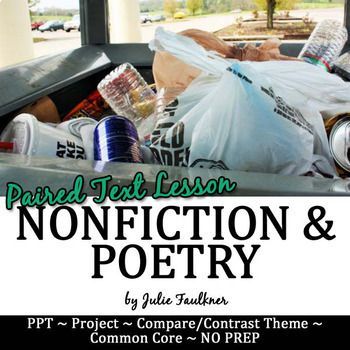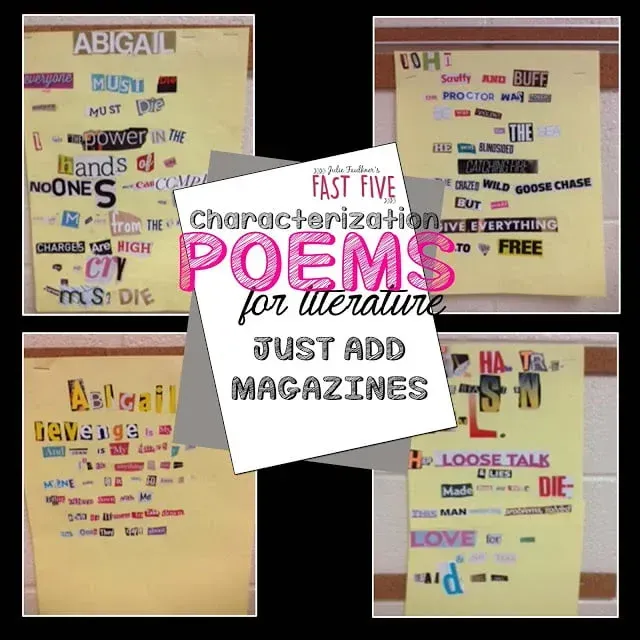Formula for Classroom Series Post #3: Interactive & Real-World Strategies
I’m continuing the series today on Classroom Success Strategies. Today’s post is a two-in-one tip for interactive and real-world teaching strategies. At the bottom of the post, feel free to link up with your own favorite strategies in the comments section. Link products, ideas, etc.!
In the fast-paced world of today’s teen, I am always looking for new and different ways to appeal to my students. I don’t always expect everything to be fun all the time, but I know that I’ll accomplish more if my students are engaged. If you are on the cusp of branching out into the interactive world of teaching strategies, or even if you are well-versed, perhaps my take below will spark you to get interactive this week!
1) An interactive lesson doesn’t have to be silly
I think a lot of times, especially high school teachers, think that interactive lessons are akin to playing games and are silly. Granted, I’ve seen some that are. To me, an interactive lesson can be anything from using task cards with individual students or in a group setting to making human MLA citations! If you wanted to bring in a little silly with the serious, play a funny song or have students race the clock! It really depends on your style and, of course, what your goals are for the class.
2) An interactive lesson doesn’t have to take a long time in class.
I like to chunk my classes into segments – usually about 15-20 minutes each. This is usually an excellent structure for my daily grammar bell ringer routine, lesson intro, interactive/group work, and individual task. Sometimes my “real-world” connection is simply a relatable video as a set activity or a funny grammar mistake from my growing collection of pictures. Other times, my real-world connections are more project-oriented, take a while longer, and give students time to work in groups, process through problem-solving strategies, and employ critical thinking skills. If you wanted to experiment with longer projects, start small. One really successful project I’ve done is my Earth Day Info Text and Real-World Project, which is perfect for April. In this Earth Day themed lesson, students compare and contrast the presentation of a similar theme or topic across genres (different types of writing) to explain how each genre shapes the author’s presentation of the theme. Next, they use their problem-solving skills to raise awareness of the need to be good stewards of the earth. Students love getting “their hands dirty” with this real-world project and presentation, and you will love that they are critically thinking about the world around them while demonstrating their understanding of key CCSS. Perhaps, you will give it a try!
3) An interactive lesson doesn’t have to be hands-on or project-oriented.
In order for a lesson to be interactive, it doesn’t have to be a full-blown project or even something where students move around. An effective and purposeful whole-group discussion or guided small-group discussion can take the attention off the teacher and make it more student-centered and interactive. I also think when a student is 100% engaged in his/her learning, that’s pretty interactive, too. I like to give case studies and short research projects where students are responsible for extracting the information about the assigned topic on their own, and then they give a presentation. If you wanted to be more adventurous and try something interactive while keeping students focused, my students enjoy readers’ theater or role playing. I love keeping a box of costume props handy when we are reading some favorites like The Crucible, Macbeth, Beowulf, or Trifles. It doesn’t take but a few minutes, and it’s great for those out-going students.
4) An interactive lesson doesn’t have to be labor-intensive for the teacher.
The idea behind an interactive or real-world lesson is that students are going to be doing most of the work and hopefully, they will be more engaged – which takes the pressure off of the teacher. One quick way I review before a test involves a small ball that we toss around the room. In fact, I call it Ball Toss Review – creative, right? Each student must answer a question about the topic, and then he/she gets to toss the ball to whomever he/she chooses. I don’t have to prepare anything, but the students are on their toes thinking and responding the entire time. Technology is another excellent way to get students more involved, and it may or may not involve a little prep work. Especially when technology is involved, most times students will dive right in. I love my newest Google-Drive eWorksheets for poetry, which are a super-cool tool for bridging the gap between today’s teens and poetry!
5) An interactive lesson doesn’t have to cost you anything
Sometimes it may seem daunting to buy game pieces, cut and laminate game cards, or prepare online worksheets or discussion boards for students. If your time and resources are limited (of course they are), there are plenty interactive ideas that are completely free. If you are in the middle of a writing unit, have students complete a 4-square peer review. Students fold a piece of notebook paper into four squares and review each other’s paper for the thesis statement, grammar/spelling, organization, and language. With April being poetry month, another fun and free hands-on idea is to have students write Characterization Poems for the piece of literature you are currently studying. Just beg and borrow to get a few magazines, and you’ll be set. If you have a bit more time, a smart device, and time to print and cut a glass set of Plickers, you will love the results. Even Plickers are mostly free, and would be excellent way to jazz up your traditional exit tickets.
I don’t think every single lesson, every single day needs to be interactive. Sometimes, teachers come down with the “activity-itis” syndrome. I’ve been guilty of it myself. See more of my thoughts about that here.
The most important thing to keep in mind for a successful lesson is that it just needs to be on purpose. More on that topic in another post in this series. Stay tuned!
If you are looking for more interactive ideas right now, I wrote an entire blog post here a while back that describes several ways to engage secondary students in the classroom.
Love this content?
Sign up for my email newsletter with more tips, ideas, success stories, and freebies!


















